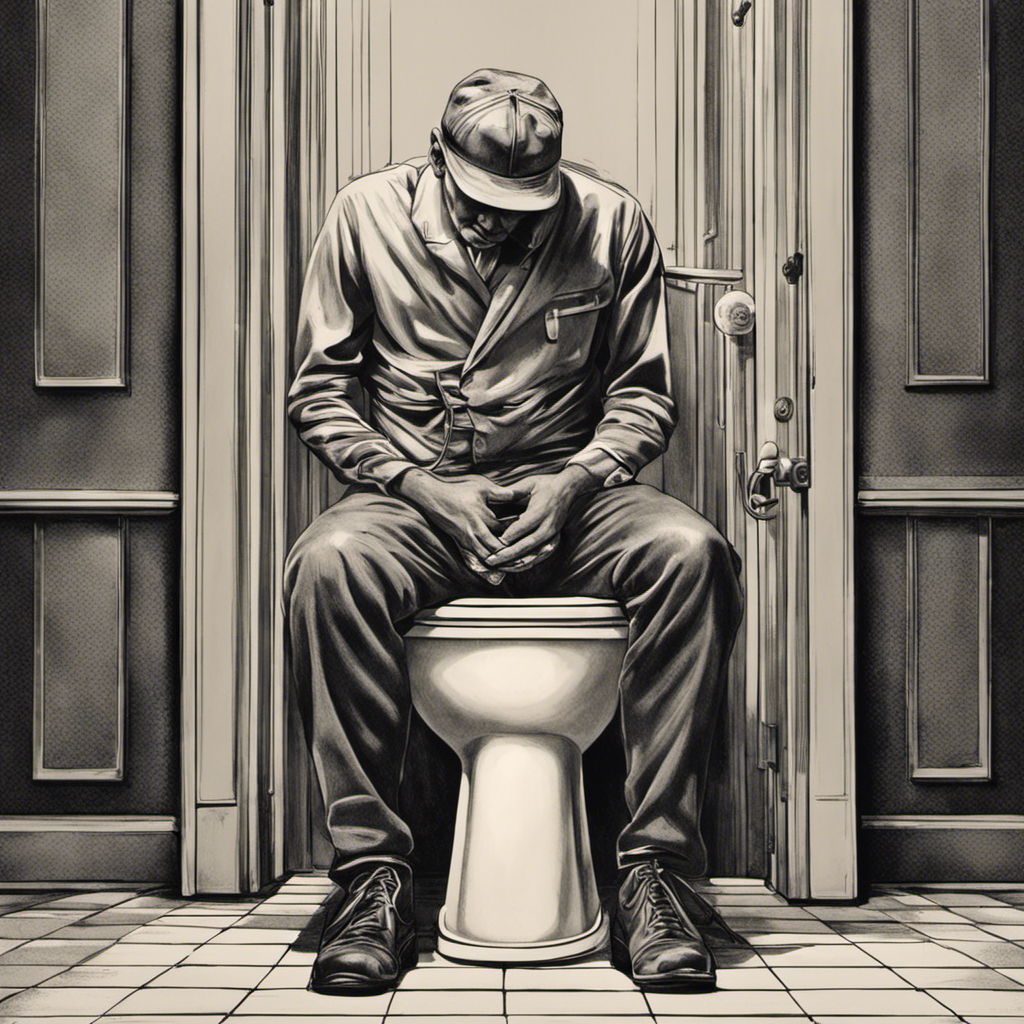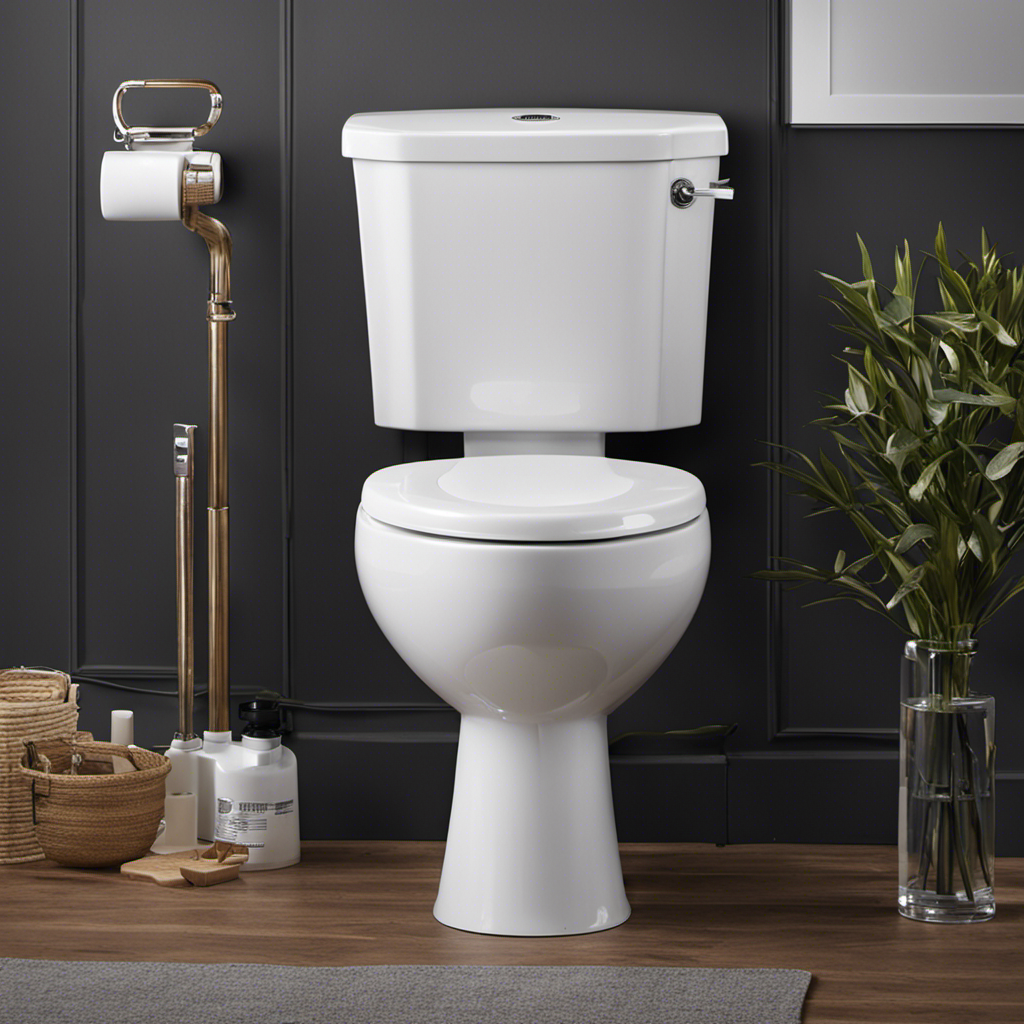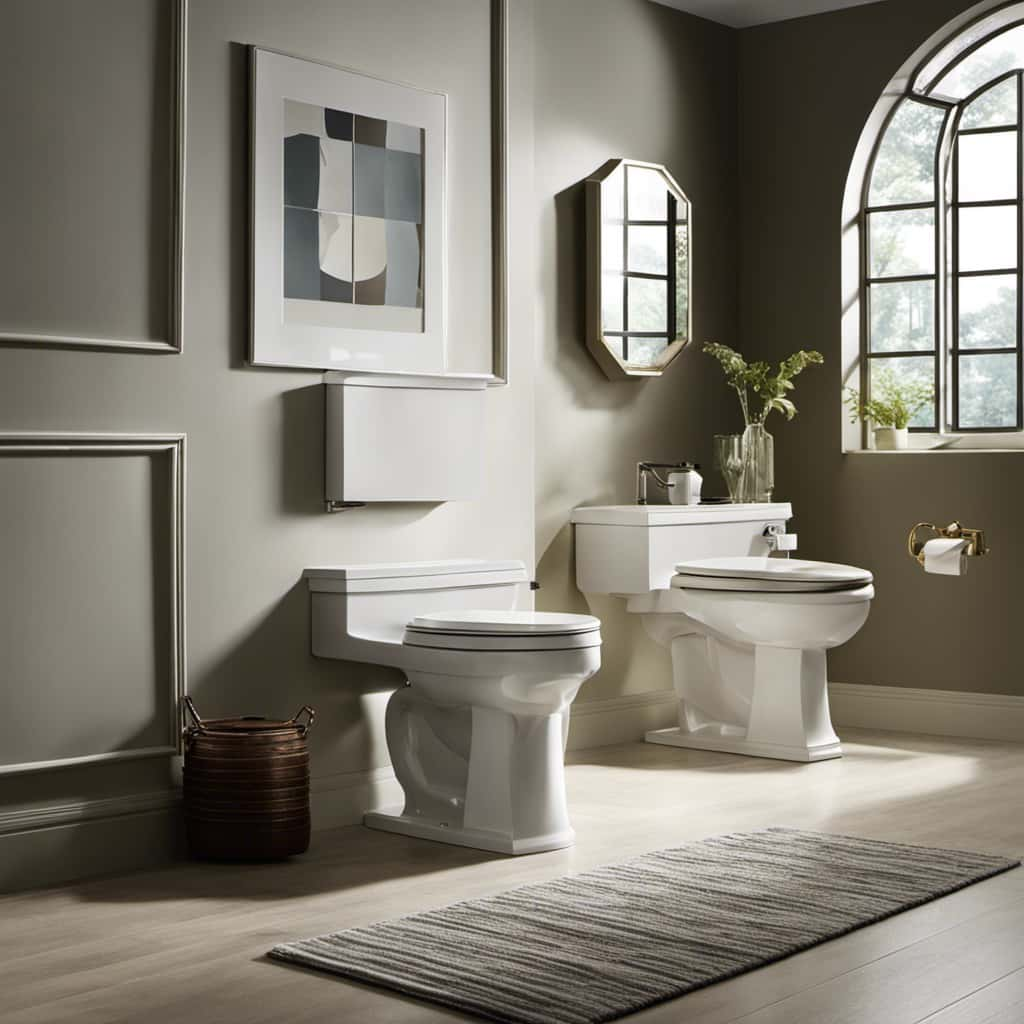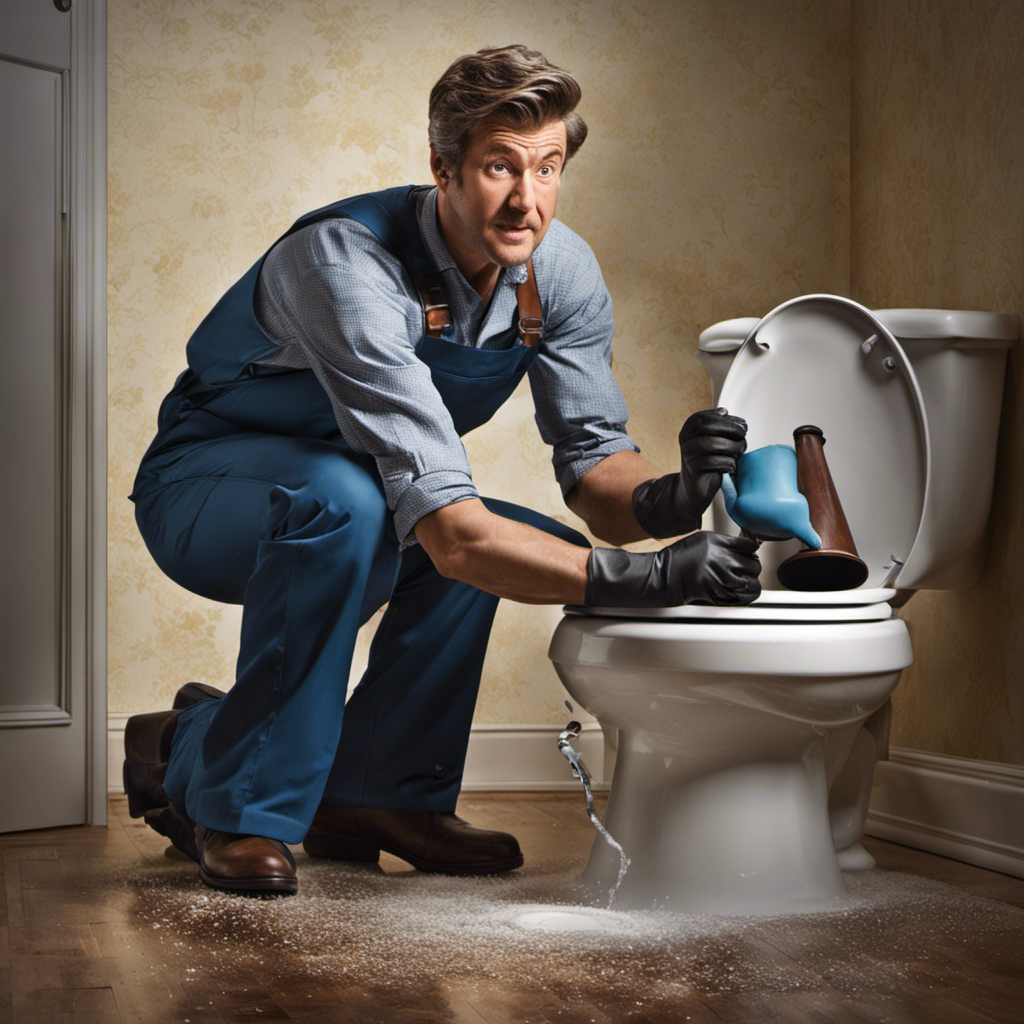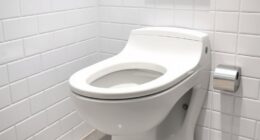Do you ever wonder why your feet fall asleep on the toilet? It’s a common phenomenon that can leave you feeling puzzled and uncomfortable.
In this article, we will explore the scientific explanations behind this sensation. From nerve compression to blood flow restriction, we’ll delve into the factors that contribute to this peculiar occurrence.
Additionally, we will discuss the role of positioning on the toilet and the potential impact of prolonged sitting.
So, let’s dive in and uncover the reasons behind your sleepy feet!
Key Takeaways
- Prolonged sitting on the toilet can lead to numbness or tingling in the feet due to reduced blood flow and compressed muscles.
- Maintaining good posture, taking breaks, and using a toilet seat design that reduces pressure on nerves can alleviate discomfort.
- Proper positioning and shifting leg positions on the toilet seat can improve blood circulation and relieve pressure points.
- Underlying medical conditions such as diabetes or peripheral neuropathy can also cause numbness or tingling in the feet, and consulting with a healthcare professional is crucial for proper diagnosis and treatment.
Scientific Explanation
You may be wondering why your feet fall asleep on the toilet. Well, it turns out that toilet seat design and muscle fatigue play a role in this phenomenon.
Let’s start with toilet seat design. Most toilet seats are designed with a small surface area and a hard material. This can put pressure on the nerves and blood vessels in your legs, leading to reduced blood flow and numbness in your feet.
Additionally, sitting on the toilet for an extended period can cause muscle fatigue. When you sit for too long, your muscles can become compressed and compressed muscles can restrict blood flow. This lack of blood flow can cause tingling or a ‘pins and needles’ sensation in your feet.
Nerve Compression
Did you know that your sitting position can have a significant impact on your body? It can actually lead to nerve compression, causing uncomfortable symptoms like numbness and tingling.
In this discussion, we will explore the effects of sitting position, the causes of nerve entrapment, and effective methods for prevention and treatment.
Sitting Position Effects
When you sit on the toilet for too long, your feet can fall asleep due to the pressure on your nerves. One of the main factors that can contribute to this is the sitting position you adopt.
Sitting on the toilet for an extended period of time can put strain on the sciatic nerve, which runs from your lower back down to your feet. This nerve is responsible for transmitting signals between your brain and your legs. Prolonged pressure on the sciatic nerve can lead to nerve compression or damage, resulting in the tingling or numbness sensation in your feet.
To prevent this, try to avoid sitting on the toilet for too long and make sure to maintain good posture while seated.
Nerve Entrapment Causes
One potential cause of nerve entrapment is the prolonged pressure on certain areas of your body. When you sit on the toilet for an extended period, your body weight can compress the nerves in your legs and buttocks, leading to nerve damage. This can result in a tingling sensation or a feeling of pins and needles in your feet.
The following factors may exacerbate the risk of nerve entrapment:
- Poor posture while sitting
- Obesity or excess weight
- Tight clothing that restricts blood flow
- Prolonged sitting without movement
Understanding these causes can help you take steps to prevent or alleviate the discomfort associated with nerve entrapment.
Prevention and Treatment?
Using proper posture while sitting, maintaining a healthy weight, wearing loose clothing, and taking regular breaks from prolonged sitting can help prevent and treat the discomfort associated with nerve entrapment.
When it comes to sitting on the toilet, paying attention to your body’s position is crucial. Consider investing in a toilet seat design that promotes proper alignment and reduces pressure on your nerves.
Additionally, incorporating foot exercises into your daily routine can improve blood circulation and prevent numbness or tingling sensations in your feet. These exercises can include toe curls, ankle rotations, and calf stretches.
By taking proactive measures to alleviate nerve entrapment, you can minimize the likelihood of experiencing discomfort while on the toilet.
Transitioning into the next section, another factor that can impact blood flow and contribute to foot numbness is blood flow restriction.
Blood Flow Restriction
If you sit on the toilet for too long, you may notice your feet falling asleep due to restricted blood flow. When you sit for an extended period, the pressure on your legs and thighs can compress the blood vessels, limiting blood circulation to your feet. This lack of blood flow can lead to a tingling sensation or numbness in your feet, causing them to fall asleep.
To prevent this discomfort, it is important to avoid sitting on the toilet for prolonged periods of time. Take breaks and walk around to improve blood circulation. Additionally, maintaining good posture while sitting on the toilet can also help alleviate the pressure on your legs and promote healthy blood flow.
Remember, taking care of your body is essential to prevent such unpleasant sensations. So, be mindful of your sitting habits and prioritize your well-being.
- Frequent breaks can prevent discomfort
- Walking around improves blood circulation
- Maintaining good posture reduces pressure on legs
- Prioritize your well-being and take care of your body
Positioning on the Toilet
When it comes to using the toilet, finding the optimal seat position is essential for relieving pressure points and promoting comfort. By adjusting the seat to a position that aligns with your body’s natural curves, you can minimize strain on your hips, back, and legs.
This can help prevent discomfort and potential health issues in the long run.
Optimal Toilet Seat Position
To find the optimal toilet seat position, try adjusting the angle of your legs. By modifying the angle at which your legs are positioned, you can enhance your toilet seat comfort and improve your overall experience. Here are some key factors to consider when finding the perfect position:
-
Ergonomic design: Look for a toilet seat that is designed with ergonomics in mind. This can help alleviate any discomfort or pressure points.
-
Adjustable features: Consider a toilet seat with adjustable features, such as height or angle adjustments. These can provide a customized fit for your body.
-
Cushioning: Opt for a toilet seat that offers sufficient cushioning to provide extra comfort during extended periods of sitting.
-
Material: Choose a toilet seat made from a soft and durable material, such as foam or gel, to ensure maximum comfort and longevity.
By taking these factors into account, you can find the optimal toilet seat position that suits your needs and relieves any pressure points.
Moving forward, let’s explore how to further alleviate discomfort and prevent your feet from falling asleep on the toilet.
Relieving Pressure Points
One way to relieve pressure points is by adjusting the position of your legs on the toilet seat. When you sit on the toilet for an extended period, the pressure can build up on certain areas of your body, leading to discomfort and even numbness.
By shifting your legs, you can redistribute the pressure and provide relief to those areas. Try crossing your legs or placing one foot on the ground while keeping the other on the toilet seat. This change in position can help improve circulation, allowing blood to flow more freely and reduce the likelihood of your feet falling asleep.
However, it is important to note that prolonged sitting can also contribute to foot numbness, which we will explore in the next section.
Prolonged Sitting
If you sit for too long, your feet can fall asleep on the toilet. Prolonged sitting can lead to a decrease in blood circulation and increased muscle tension, which can cause your feet to feel numb or tingly. Here are some reasons why your feet may fall asleep:
-
Poor blood circulation: Sitting for long periods can restrict blood flow to your feet, leading to a lack of oxygen and nutrients reaching the muscles and nerves.
-
Nerve compression: Sitting in a cramped position can put pressure on the nerves in your legs and feet, causing them to become compressed and resulting in feelings of numbness or tingling.
-
Muscle tension: Remaining in one position for too long can cause your muscles to become tense and tight, which can impede proper blood flow and lead to discomfort.
-
Restricted movement: When sitting on a toilet, your feet may be in an awkward position or confined space, further restricting blood flow and increasing the likelihood of your feet falling asleep.
To prevent this, try to take regular breaks from sitting, stretch your legs and feet, and maintain good posture while sitting.
Underlying Medical Conditions
Having underlying medical conditions can increase the risk of experiencing numbness or tingling in your feet. Certain conditions such as diabetes, peripheral neuropathy, and multiple sclerosis can affect the nerves in your feet, leading to these sensations. It’s important to consult with a healthcare professional for proper diagnosis and treatment. Here is a table outlining some common underlying medical conditions that can cause numbness or tingling in the feet:
| Medical Condition | Description |
|---|---|
| Diabetes | High blood sugar levels can damage nerves |
| Peripheral Neuropathy | Nerve damage often caused by diabetes |
| Multiple Sclerosis | Autoimmune disease affecting the nerves |
Medical treatment for these conditions may include medication, physical therapy, or surgeries. However, there are also alternative remedies that may help alleviate symptoms, such as acupuncture, massage, or wearing supportive footwear. It’s essential to work closely with your healthcare provider to find the best approach for managing your underlying medical condition and reducing numbness or tingling in your feet.
Prevention and Management Tips
There are several ways to prevent and manage numbness or tingling in your feet. One way is by maintaining a healthy lifestyle and managing underlying medical conditions. Here are some tips to help you prevent and manage these uncomfortable sensations:
-
Wear comfortable shoes: Choose footwear that fits well and provides proper support to your feet. This can help prevent unnecessary pressure on nerves.
-
Take breaks: If you spend long periods standing or sitting, take regular breaks to move around and stretch your legs. This can improve blood circulation and reduce the risk of numbness.
-
Exercise regularly: Engaging in physical activity can improve blood flow and nerve function. Aim for at least 30 minutes of moderate exercise most days of the week.
-
Manage your weight: Excess weight can put extra pressure on your feet and increase the risk of numbness. Maintain a healthy weight through a balanced diet and regular exercise.
Conclusion
So there you have it, now you know why your feet may fall asleep while you’re sitting on the toilet. It all comes down to nerve compression, blood flow restriction, and the positioning of your body.
But don’t worry, there are ways to prevent and manage this uncomfortable sensation. Simply changing your position, taking breaks from prolonged sitting, and addressing any underlying medical conditions can make a big difference.
So next time you feel your feet tingling on the toilet, remember to move around and keep those blood vessels flowing. After all, nobody wants numb feet!
